
|
| Accept Cookies | Customize | Refuse Cookies |
Ivan61 www.juzaphoto.com/p/Ivan61  |
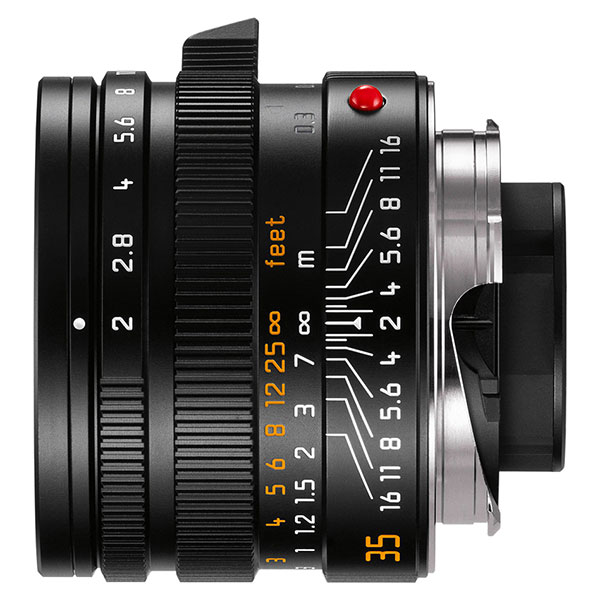 | Leica APO-Summicron-M 35mm f/2 ASPH Pros: Size, build quality, optical quality, sharpness, micro contrast, versatility Cons: Just the price Opinion: I've been using this 35 mm on the M10P for two years and so I'm writing after trying it well, I find that it has a very high resolution with an excellent micro contrast, very natural colors and an absolutely neutral and faithful complexion in color, nevertheless it is not a particularly excessively contrasting lens so as to make any type of PP processing possible. Its reduced minimum focus allows for creativity unknown to other 35mm M-mount cameras. In summary, it's the best 35mm I've ever tried and if it weren't for the cost (which is justified by the construction) it would be a lens to consider without a shadow of a doubt sent on February 12, 2024 |
 | Leica Summilux-M 35mm f/1.4 Pros: Size, weight, maximum aperture, versatility, no distortion, soft and pleasant blur Cons: Very soft and suffers from spherical aberration at TA, it also suffers from flare a bit on all diaphragms Opinion: Leica's longest-running lens, it was in production from 1960 to 1996, it went out of production only with the release of the second Summilux 35 Asph while it shared the price list with the first Summilux 35 Asph, today it is back in production again with the name of Steel Rim this makes you understand the goodness of the optics. Finally, it is interesting to note that its optical scheme with 7 lenses in 5 groups is the same as the famous and mythologized Summicron 35 mm IV series called KoB (in my personal opinion with a nonsensical current evaluation), but also of the subsequent Summicron 35 mm Asph which entered production in 1996 and is still currently in production (not to be confused with the Summicron 35 mm Apo) and this says a lot about the goodness of the optical scheme pretty much perfect. Personally I used it first on film, then sold it with the switch to digital and a Summilux 35 Asph and then recently bought it again for the M10P ... Having this little gem is a bit like having two lenses in one film and even a three in one in digital and I'll explain myself immediately. On f/2 film it already becomes a well-contrasted and performing lens, on the other hand, having given the optical scheme to its little brother Summicron IV Series it has the same performance, indeed at f/2 even better as the Lux already works at a smaller aperture while the Cron pays the TA ... in digital at f/2 and f/2.8 it has a pleasant softness ideal in female portraits, but the resolution is high and therefore in PP you can recover contrast without problems they also meet the need for an ethnic portrait, from f/4 onwards it offers a very high resolution so as to be able to make important crops without losing definition, the colors are always bright but are very natural, never violent while the rich black and white is always well contrasted, but with many shades of gray. I have deliberately omitted so far to talk about the maximum aperture because it is a story in itself as it is a very soft lens with a low contrast and therefore excellent for evening shots with situations of strong contrast with violent lights and very closed shadows (sometimes too much), its ideal field is night photography in general, theatre photography, photography in concerts (it is no coincidence that it was the preferred lens of Giuseppe Pino, a well-known jazz photographer) but also portraits, perhaps by candlelight, where the candle, thanks to the spherical aberration, takes on a particular iridescence and perhaps a white sweater that takes on a golden halo completes a practically unique rendering, here a classic example https://www.flickr.com/photos/ivandefrancesco/48415994721/in/album-72157675606119063/ sent on January 02, 2024 |
 | Leica Elmarit-M 21mm f/2.8 Pros: Cost, yield, size and weight Cons: It's a perspective of the 70s and you have to know what to expect Opinion: It is the second specimen of Elmarit 21 mm f / 2.8 (I specify immediately that both my specimens are the so-called Close Focus or the very first specimens with minimum focus at 40 cm, then from the second batch they immediately returned to the canonical 70 cm, with these specimens on Leica M we must remember that under 70 cm only an estimate focus or with electronic viewfinder / LW works) that I have, the first used on film with M6 and then with MP240 then sold to make room for more modern optics, but in the end I bought it back! And now I use it on my M10P Compared to the next Asph is less engraved and correct at the edges especially and at TA (to already closing a stop the situation changes and they are equivalent), but it is much more plastic making a good impression of three-dimensionality, obviously the modern Super Elmar 21 literally outclasses it in everything, but apart from that with an aperture of 3.4 it is very dark and then it is very correct, but it offers less that sense of three-dimensionality that should be the strength of a wide angle pushed ... only 21 of the real house that (in my opinion) really outclasses in all this 21 is the Summilux (which I have had for a long time), but as cost, weight and size is not comparable. In conclusion I think that this specimen will remain with me for many and many years, but if you want to take an optics like this my advice is to always use it with apertures from f / 4 to f / 8 and it will never disappoint you ... unless photographing very central people and scenes you deliberately want to have the less perfect edges so as to direct your gaze to the center and this is the only reason for my 9 instead of the canonical 10 that could deserve if we consider the age and its current relatively acceptable prices for a Leica Optics. My pictures speak for themselves! P.S. When I sold the first specimen I then discovered after that it had a slight clouding on the inner lenses due to age, nothing serious is that I did easily clean, but in fact comparing the two specimens this is much sharper ... Considering that it is not easy to notice given the minimum size of the rear lens and if it does not have a reference with an identical specimen, my advice is to always buy it in certain and certified stores or at least send it for a review by a serious repairer and you will enjoy it with satisfaction for a long time sent on June 15, 2023 |
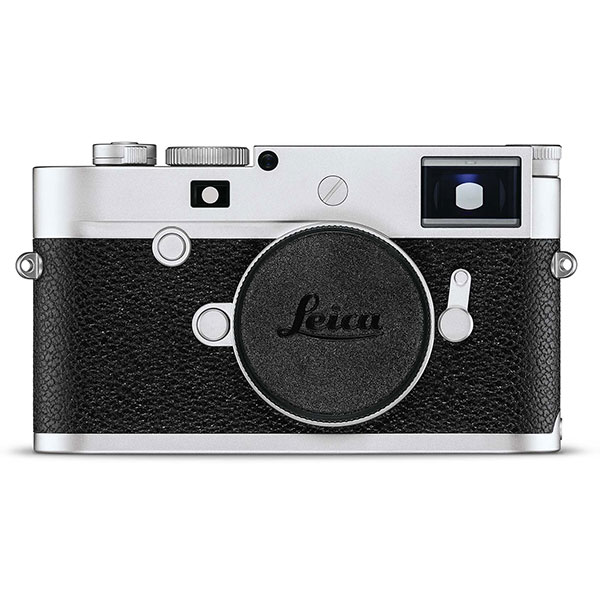 | Leica M10-P Pros: First of all user experience, then dimensions, construction materials, retro style, very quiet shutter, optical park, essentiality, high value holding in the used, very pleasant and balanced file, RAW file extension is the universal DNG Cons: High cost of the camera body and optics, obviously it is not to do everything and it is not for everyone, a purchase that must be evaluated very carefully Opinion: I have the M10P for about two and a half years and I will also be biased, but for my needs it is the perfect machine, small and discreet it goes practically unnoticed thanks to the particularly quiet shutter (even more than the famous first M3 DS) ... when I ride always and everywhere with my M around my neck (without fear of theft because few recognize it) I am mistaken for a nice harmless old man with a vintage car and not as a danger that points a cannon at him! But let's proceed with order, the M is the essentiality made camera, no IBIS, no AF to adjust and points to choose, nothing at all and so you focus on where to focus (I have never lost a photograph because blurred) the M system (from 10 onwards) you have everything you need to photograph on sight, ISO, timing, apertures, focus distance and butterfly of the PDC and it's all within sight, with the camera around your neck it's all in a triangle ... In the menu you go home for any special settings or for some particular photographs (for example for the virtual horizon or to preview the perspective correction with the wide angles). Personally I use Leica M since March 1995 and then next month are 28 years in which (in addition to those of my father who went around the house) I had 4 different M6, an M4P, an M4 (which I still have) and various screw leichette and then an MP240 and I can tell you that I shoot with the M10P exactly as I shot with the M6 or more correctly as I would have shot with an M7, It changes the image recording medium from film to a sensor, but it does not change the user experience ... personally in these 28 years I have also had Canon, Fuji, Panasonic, and others including an SL, all exceptional machines in theirs, but none gave me the pleasure of shooting the M10P Another strong point of the M system is the vast optical park, all compatible from 1932 onwards, in addition to the VGT, Zeiss and the Chinese there is something for all tastes and pockets. Finally I personally tell you that I bought my M10P (new) with its 24 MP after the release of the M10R and I never felt the need to have those MP more, mounting top optics I always printed in large sizes up to 2 X 1.5 meters, made important crop and then printed 60X90 and I could go further, I also printed 80X120 at 12,500 ISO and with the right PP it is perfect. Basically it is my perfect machine that I will keep for a long time (I consider at least 10 years) even strong of the poor aging of the M system thanks to its essentiality and little electronics and the M10P in particular with the shutter very quiet and a file that I always like very much. sent on February 14, 2023 |
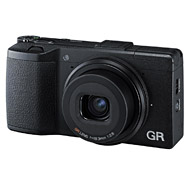 | Ricoh GR Pros: Size, speed of use, beautiful, pleasant and faithful file even in colors, RAW file with DNG extension Cons: Dust problem on the sensor, lack of an additional telephoto optical, an external viewfinder in the style of Visioflex Leica may be useful, ISO seal Opinion: I use the smooth GR for a few months, to be exact since October last year and then are about 4 months and I find it excellent, everyone talks about black and white, but I find it very pleasant even on the color always faithful, well balanced and saturated without being shouted (I still shoot only in DNG) in essence the file is exceptional merit of a good combination sensor / optical / electronic, But let's get to the idea that I also made by reading the previous opinions: - the battery does not last long? Apart from that if you use it as I use it, or as a machine to always have behind and a click every now and then the battery lasts me more than a few days, but certainly in continuous use probably enough to have a second battery in your pocket (the batteries are still really small and light that you do not even notice and cost little especially the compatible); - the display is not adjustable missing the viewfinder? true it could be comfortable, but it could be a further weak point and even without adjustable display it was never difficult for me to shoot even with the camera practically on the ground ... Wrong what you frame with a 28 mm is difficult, with time and always using fixed optics you already know how and where to position yourself with the focal length and compose even without seeing, and if the dimensions had to be larger for a viewfinder (then maybe criticized because small and not very visible) I have to say thank goodness that there is not, always in my opinion of course .... certainly a possibility of electronic viewfinder (in the style of Leica's Visioflex for example) could also be useful in certain circumstances and photographs, but you also quickly get used to the display (and those who love the viewfinder say so!); - another advantage is the file with DNG extension and not a proprietary file, so it is always well interpreted by all PP programs; - the only drawback is really the dust on the sensor that has already entered fortunately at the extreme edge and with a small crop I make it disappear if I can not with the various clone stamps etc. In short, I am satisfied and I will keep (even as a backup in case of always possible malfunctions of the M) ... I am satisfied so much that I also bought used the additional 21 mm (which as usual I will pick up at the next trip to Italy scheduled for mid-April) and I will tell you what I think ... only thing I regret is not having an additional that brings the camera to a 50 mm and this I think is also a problem of the III that has the ability to go from 28 mm to 21 mm and the IIIX from 40 mm to 75 mm but none of its can respectively go up or down of the focal length otherwise the IIIX would have been perfect for me with a 40 mm and a 24 maybe (if the same additional brings the smooth III to 21) basically I use a lot and I love the 35 mm to which I joined before a 24 and now a 21 mm while I do not feel the need for a longer focal length so a IIIX with additional wide angle would be perfect for me I took the smooth GR to try the GR system without committing large resources and as a machine to really have always in tow ... and now I'm in love with it! However, the GR is cool (to say it to the Roman) is really in your pocket, smaller than a Smartphone and churns out high quality files comparable to many more famous kits ... Of course put to the whip feels the weight of the years, but his does it and very well sent on February 14, 2023 |
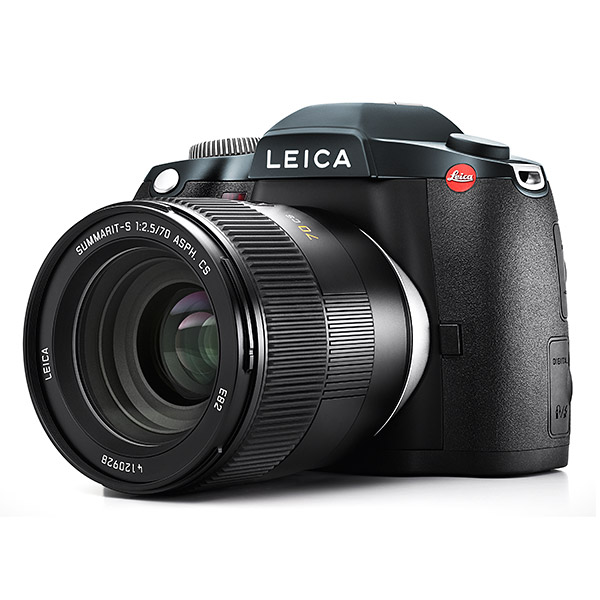 | Leica S-E (Typ 006) Pros: File quality, optical quality, possibility of mounting many MF lenses with adapter ring, high quality viewfinder, very precise AF even if not very fast (but action photography is not in the DNA of an MF, more than satisfactory optical park for an MF Cons: Weight and bulk, still high cost although there is a lot of quality even many years after the presentation says its, slow AF albeit very precise, first and second slot with Memory card of different types, limited resaleability Opinion: I had for a few months (on loan) this machine with a Summarit 70 mm. It has literally bewitched me, it is neither small nor light, it has an AF that is not very fast (but precise) and yet not a day goes by that I do not think of taking one and every day I rape myself not to do it. Cost, resaleability, weight and use that I would do rationally stop me, but every time I reopen those files so pleasant the heart beats strongly ... in a post some time ago I had already talked about it is put examples for this I put the link below for those who want to deepen https://www.juzaphoto.com/topic2.php?l=it&t=3774155 sent on July 22, 2022 |
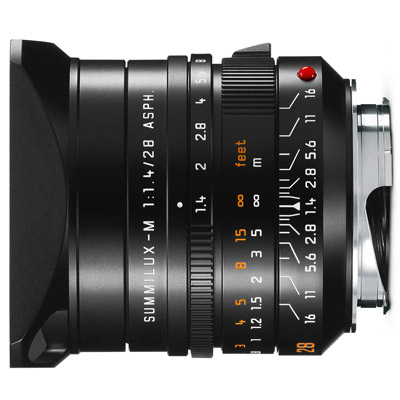 | Leica Summilux-M 28mm f/1.4 ASPH Pros: Build quality, optical quality, incredible colors, very pleasant blurry Cons: Weight and overall dimensions Opinion: I have had this incredible optics for over 1 year, on my M10P it has always given me incredibly beautiful and pleasant colors, always charged and saturated but never screamed. Practically it can be the total weapon used as a normal 28 mm for street or reportage, but opening the aperture also becomes a portrait lens with a very pleasant blur. One of the best Leica optics ever, the only flaw is the weight and above all the dimensions not indifferent to the M philosophy and this is why I sold it. In any case, I already know that I will regret it for its delicate and engraved at the same time in an always perfect balance. Sharp and engraved already at TA both in the center and at the edges when closing the diaphragm only serves to increase the PDC sent on March 03, 2022 |
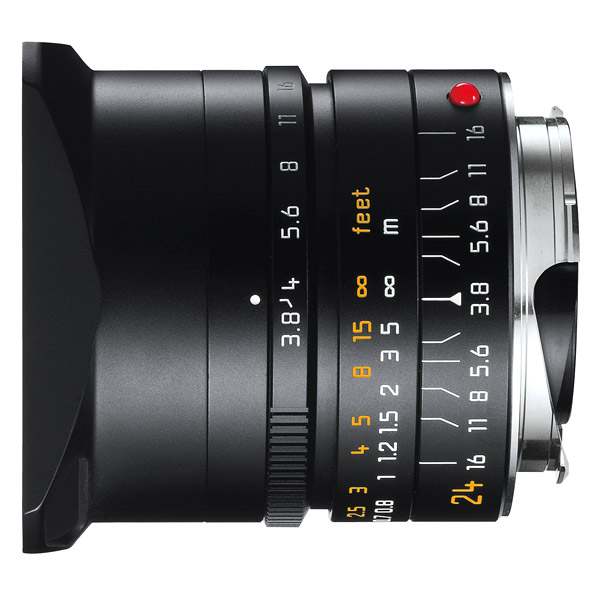 | Leica Elmar-M 24mm f/3.8 ASPH Pros: Spectacular yield, weight, size, versatility, contrast, bright colors, free from vignetting and distortion even at the most extreme edges and at TA Cons: Limited maximum aperture, but being a wide angle pushed is not decisive, lack of the frame in the viewfinder of the Leica M, but I took the references and I do less easily Opinion: Simply spectacular optics! I also had the previous version (Elmarit f / 2.8) also the excellent one with minimal distortion of the edges, this version instead is completely free as it is completely free from vignetting even at TA. The maximum aperture is not great, but being a 24 mm that is mostly used at intermediate apertures I do not see it as a problem, before I had the f / 2.8 version but I never needed this diaphragm in normal use of a 24 mm. The lack of frames in the viewfinder of the Leica M may seem like a limit, but in reality I took some references, it is little more than the frames of the 28 mm and I have difficulty composing up to the margins with a bit of experience and habit. It has a resolution, a precision down to the smallest detail that is an absolute reference so much so that I could print 2 X 1.5 meters a perfect photo even at close range from the 24 MP sensor of my M10P. In summary, it is a perfect optics for reportage and street also thanks to its high PDC and does not make me regret the 28 mm under any circumstances. The only thing that for a leicist maybe it takes a little time to understand the focal length of the 24 not so Wide as the 21 and less versatile than the 35 (classic focal lengths from Leica M) in fact I had sold the Elmarit because little Wide, but then finally I understood it and learned to appreciate it and now I can no longer do without it sent on February 26, 2022 |
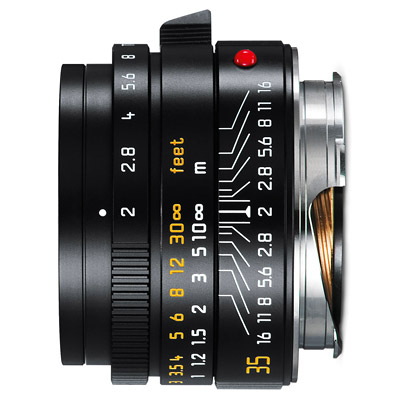 | Leica Summicron-M 35mm f/2 ASPH (2016) Pros: Weight, build quality, quality in yield, combined with a Leica M becomes a compact all-rounder and of the highest quality, indestructible lens in particular in the chrome version entirely in brass Cons: Native hood (in the 1996 version) although effective comes off easily, the chrome version is heavier than black, but the machine is very well balanced Opinion: Given that in 27 years of Leica M is my third Summicron 35 (the other Pre Asph) and that, always talking about 35 mm of Leica house, I have had all (or almost) the Summilux I say that this Summicron is the perfect combination for my M (currently an M10P) ... I explain better, with my first M, an M6, in 1995 I bought a Summicron 35 IV Chrome Series and it remained with me for 10 years, then I sold it to try roads of other brands and the economic delta I used it to complete the kit, but in the end I bought it back and then sold it the second time to try the way of the Summilux thinking they were more versatile thanks to the greater openness, first the Pre Asph, then the Asph with the transition to digital and finally to the FLE, fantastic optics, but heavier and bulkier, when I found the 1996 model in perfect condition, chrome and equal to the new I tightened the strap and I took it back. Compared to the Summilux 35 FLE I find it much more contrasted and with more vivid colors (the Lux is softer and more battered, but attention no less engraved) and in any case the Cron is smaller and lighter ideal for going unnoticed. Excellent already at f / 2 practically free from distortion and vignetting already at the minimum distances is the perfect lens from Reportage and I use it purely in this area (so f / 2 is enough for me) in the end I preferred it to the Summilux which instead is appreciated especially if you use its greater aperture. Wanting to use it as a single lens, its limit is the minimum focusing distance of 70 cm which for a 35 mm does not allow you to make close-up shots and portraits in the foreground. The main flaw is in its native hood (I always talk about the 1996 version that I have) it is certainly pleasant to see, but equipped with a clip stop that comes off easily at risk of loss and with a considerable cost, ditto for the hood cap in soft rubber pressure. I solved on Amazon with a round metal hood screw E39 to put on the filter holder and a commercial cap for a total cost of € 10 In any case it is a fantastic and very versatile lens that should never be missing in the kit of a Leica M ... personally I know that this lens will no longer come out of my kit sent on February 26, 2022 |
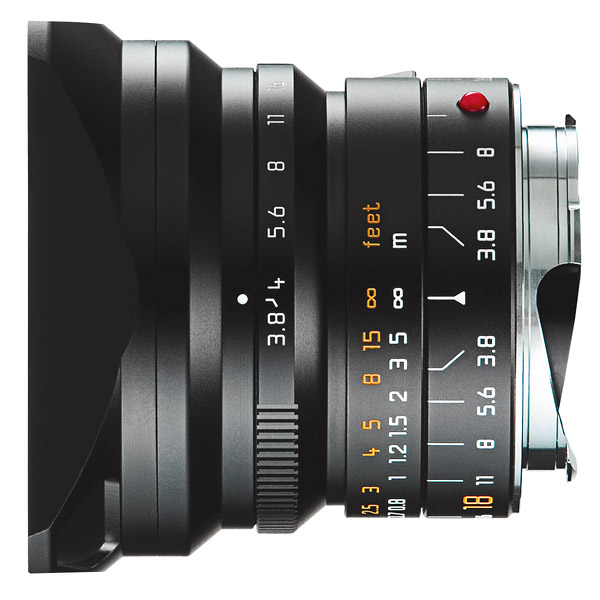 | Leica Super-Elmar-M 18mm f/3.8 ASPH Pros: Compactness, weight, construction, sharpness, colors, low distortion, used price hold Cons: Gesione filters, price if for occasional use Opinion: Had for a few years, sold 3 times and 3 times bought back simply because its yield is excellent and when you have tried it you can not do without it, but then you realize that it has a not easy angle of view to manage on a Leica M and then resold and then I missed it in a loop ... bright colors, high plasticity, superlative yield, minimal distortion even at the edges is a total Super Wide Angle for those who need an intense use of this focal length, for 3 photos a year better to find something third-party saving a lot of money. I absolutely recommend the visioflex and not its optical viewfinder as it is difficult to manage by an M in particular for the vertical angle of view more than the horizontal one, the rings are fluid and with the right resistance, its compactness and low weight make it a very practical lens to use and always have in your bag, even if compactness and low weight are at the expense of a not high brightness, but if a Super Wide Angle also exploit the qualities of the extended PDC closing the diaphragm this is certainly not a problem sent on September 29, 2021 |
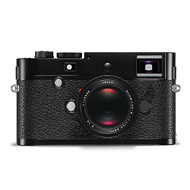 | Leica M-P Pros: Robust, simple, timeless, sapphire crystal, battery life, used price, low vibration, very discreet, vintage look, price holding Cons: Heavy, you have to love the optical rangefinder, ridiculous Visioflex, the sensor gets dirty easily, ISO seal, lack wifi Opinion: I had this M for about a year switching from analog to digital M and it made me collapse all the perplexities I had about reliability, robustness, etc. of digital ... I used it from -20 in a Baltic Sea in the middle of winter to +41 in the Maghreb in August, passing through a rainy Nuremberg at the end of January. I have been there on a sailboat as in the middle of the Sahara desert for several days and it has never disappointed me, the date of the battery is huge as long as you use the optical rangefinder and not the visioflex. The ISO seal is good up to 1600 over the noise begins to be present, but always pleasant and even up to 3200 is fully exploitable, they could be few, but in the meantime they are real (as seen with external light meter) and in any case it is not the philosophy of a Leica M photograph at 50,000 ISO. The sapphire crystal of the Display is totally scratch-resistant and makes any protective film superfluous, the battery life is enormous, even in the cold of Lithuania in January a battery lasted me a day and even a day and a half without problems, reviewing the images taken and occasionally framing from the display. The vibrations are almost absent as in the best tradition of the M philosophy and the vintage appearance combined with a good silence make it a machine that goes unnoticed. Among the defects I wrote that the sensor gets dirty easily, I think it is for the current that passes through it that captures the dust, you have to be careful and limit the optical change and blow often anyway cleaning the sensor is a fairly simple operation, but you have to know it (the M10P I have now is much more refractory to dust), another flaw is the lack of a wirelees link to directly download photos without going with SD from the computer. In essence it is a very robust and reliable machine that reflects the M philosophy destined to age little both technologically and in appearance (in the end the differences with the M10 are minimal) and with an affordable price you enter the M world, compared to the basic M240 has a buffer twice as fast, has the display in. sapphire and the lever to select the frames and then previsualize a change of optics, three things that made me prefer it for the little difference in price you have a better machine, even from an aesthetic point of view the lack of the red sticker and the only discreet writing on the roof make it an absolutely discreet machine. Personally I changed it for pure whim, I happened to have a new M10P on offer and since they are machines that do not age I wanted to celebrate my 25 years of use of Leica M (in various variations) with a new M10P that will now accompany me for the next 10 years, but also the MP240 would have lasted me another 10 years, if you ask me if the gearbox was worth it I answer that surely the M10P has something more, but it does not distort anything as I used the 240 I use the 10 and the difference in cost is important, but you know the monkeys you pay sent on September 29, 2021 |
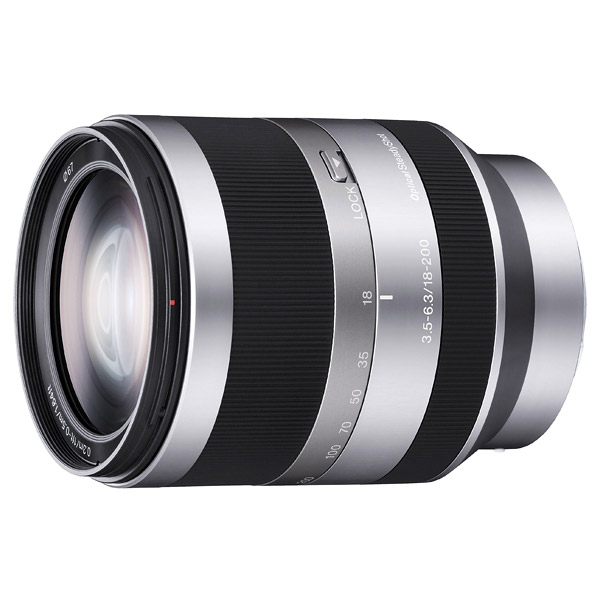 | Sony E 18-200mm f/3.5-6.3 OSS Pros: Versatility, reliable, excellent optical performance considering extreme focal excursion Cons: Weight, size, disrea screen Opinion: In fact my wife used it, the yield is absolutely acceptable considering the focus excursion quite extreme, subscription with the Nex7 getting to print even 50X70 from a crop to the maximum focal. Of course it is big and heavy and also disre lit, but if you think that there is a small Sony APSC and only one lens you can travel anywhere having from a wide angle 28 mm equivalent to a 300 mm canvas equivalent is not to be disdained .... certainly a bright fixed quality will have another yield, but also a different versatility I read who preceded me and our experience will put me to say that I can not agree, that we have a very successful specimen? sent on October 11, 2020 |
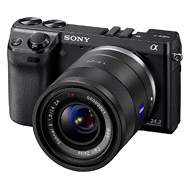 | Sony NEX-7 Pros: Featherweight, RAW file yield, reliable, battery life, tipper rear screen (it's not so obvious always), AF, exposure and white balance always quite reliable even in automation getting images always (or almost) perfect on every occasion, small flash useful for backlights. I read that many complain about the Jpeg, never taken in such mode so I do not express myself Cons: Plastic outer body that looks light and fragile (the price of featherweight) but it is not so, it has never given problems. Lack of Wi-Fi and Bluetooth (but quite normal for the years to which it refers), only tipper screen and not orientable in all directions. Opinion: In fact, my wife used it for a few years with extreme satisfaction, always used in RAW with the 18-200 Sony E and turned out to be a versatile and reliable machine, we brought it from -20 Lithuania in January to the .40 of Tunisia in the summer, but also on rainy and humid days as in the Sahara desert without ever a problem , never a blank shot. Its 24 MP combined with an extreme lens, but quality allowed us to easily print even 50X70 photos from a crop and with the lens at the maximum focal and ISO not quite minimal given the sunset time. Overall a more than positive opinion, changed only because I gave her the new A6500 ... but he leaves it with displeasure and maybe stays in the house, who knows that the new ones are just as reliable? Yes because reliability on the go is everything, the certainty of being able to take home the shots is priceless and our Nex7 has always given us serenity who knows that the 6500 can do the same and better sent on October 11, 2020 |
 | Leica M6 TTL Pros: Size, robustness, reliability, mechanical accuracy, design, accurate and reliable telemeter, virtually non-existent noise and vibration Cons: Loading not easy to the first experiences, basic exhibit, information in the crosshairs almost non-existent Opinion: The defects of an M6 are the merits ... my first M6 25 years ago and every time I sold it thinking I could use something else I bought it back .... today I am on my fourth M6 and I do not think I will sell it anymore even if the use less complicit a digital M .... anyway in these 25 years I have used my M6 in various continents, in various climatic situations and I have never had any problems with any ... Like all beautiful women she needs loving care, and a simple overhaul from time to time guarantees you a machine that can pass to children and grandchildren even if the M6 were to be older than you .... in the crosshairs only the minimal information of over and under exposure and obviously correct exposure, but for me an advantage, a pure and essential machine without frills that allows to devote to composition without distractions ... Minimal noise and low vibrations allow you to go unnoticed and be able to use unthinkable shooting times with a reflex sent on September 20, 2020 |
 | Leica M6 TTL Pros: Size, robustness, reliability, mechanical accuracy, design, accurate and reliable telemeter, virtually non-existent noise and vibration Cons: Loading not easy to the first experiences, basic exhibit, information in the crosshairs almost non-existent Opinion: The defects of an M6 are the merits ... my first M6 25 years ago and every time I sold it thinking I could use something else I bought it back .... today I am on my fourth M6 and I do not think I will sell it anymore even if the use less complicit a digital M .... anyway in these 25 years I have used my M6 in various continents, in various climatic situations and I have never had any problems with any ... Like all beautiful women she needs loving care, and a simple overhaul from time to time guarantees you a machine that can pass to children and grandchildren even if the M6 were to be older than you .... in the crosshairs only the minimal information of over and under exposure and obviously correct exposure, but for me an advantage, a pure and essential machine without frills that allows to devote to composition without distractions ... Minimal noise and low vibrations allow you to go unnoticed and be able to use unthinkable shooting times with a reflex sent on September 20, 2020 |
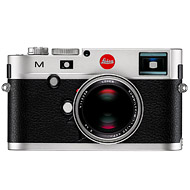 | Leica M (Typ 240) Pros: Robustness, Value for a Leica, reliability, battery life, all brass and as it ages is also more beautiful, unique M with video mode, sapphire rear screen really anti-scratch that without protective film Cons: Price of used however adequate to Leica, expensive accessories, no GPS, no connection with Smartphone, inadequate EVF viewfinder Opinion: I had the MP240 for a year and I'm going to sell it reluctantly just because I took off the sphidness of a new M10P, actually there are no real differences between the MP240 and the M10P in terms of image quality, I can't talk much about the M10P yet, but of the MP240 I can tell you that I went from -20 of a cold Baltic Sea in Lithuania on New Year's Eve to .41 in Tunisia this summer , I went from a rainy and humid winter Germany to the dry and dusty Sahara without ever uncertainty and without ever missing a beat .... thanks to you I started and faked a photo book in 6 months (next release ... I hope ) .... never a problem and this convinced me to switch to a new digital M that I will keep for several years, I do not deny that the M10P has several advantages, but the price difference is not small sent on September 20, 2020 |
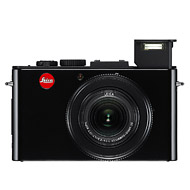 | Leica D-Lux 6 Pros: A complete compact, control possibilities with diaphragms on optics, materials and construction quality, intuitive menu Cons: It is not the operational speed its strong, external EVF sight from the design to the questionable Opinion: Personally I had the D-Lux 3 , then the 6 and finally I had landed at the LX100 (basically a Type 109), the latter never convinced me (find my review under the LX 100, I bought back the D-Lux 3 for 100 euros for its minimum size, a real compact for 100 euros, but I also bought back the 6 a real compact .... it is true the viewfinder is external and is not nice besides enlarging the machine, but I gladly use the rear Display to keep the scene under control, the diaphragm on the lens allows me to control the depth of field easily, the quality of the files is excellent in spite of the sensor and give prints of good quality and also generous size (a White and Black was printed 30X40 without disfiguring near photos made with kits emblazoned). The Vario Summilux gives bright colors and a blurry one decidedly pleasant and compared to the next sister really stands in the pocket .... this is what I consider a perfect compact to have with it, replaces both the souvenir photos made with the phone for its simplicity, and those with emblazoned kits when you do not want to carry weight and clutter around .... I repeat in the digital compact sector I went from Leica C-Lux 2 to Fuji X10, D-Lux 3, D-Lux 6 and Panasonic LX100 (basically a Leica Type 109) and in the end I elected this to compact everything do for family photos, souvenir photos, for the Sunday outing, etc. moreover now I took the G-Star a special series with a pleasant coloring and some extra sophistication among the accessories ..... maintains the price compared to peers of equal rank to demonstrate the quality, but remains very accessible sent on July 04, 2020 |
 | Leica D-Lux 6 Pros: A complete compact, control possibilities with diaphragms on optics, materials and construction quality, intuitive menu Cons: It is not the operational speed its strong, external EVF sight from the design to the questionable Opinion: Personally I had the D-Lux 3 , then the 6 and finally I had landed at the LX100 (basically a Type 109), the latter never convinced me (find my review under the LX 100, I bought back the D-Lux 3 for 100 euros for its minimum size, a real compact for 100 euros, but I also bought back the 6 a real compact .... it is true the viewfinder is external and is not nice besides enlarging the machine, but I gladly use the rear Display to keep the scene under control, the diaphragm on the lens allows me to control the depth of field easily, the quality of the files is excellent in spite of the sensor and give prints of good quality and also generous size (a White and Black was printed 30X40 without disfiguring near photos made with kits emblazoned). The Vario Summilux gives bright colors and a blurry one decidedly pleasant and compared to the next sister really stands in the pocket .... this is what I consider a perfect compact to have with it, replaces both the souvenir photos made with the phone for its simplicity, and those with emblazoned kits when you do not want to carry weight and clutter around .... I repeat in the digital compact sector I went from Leica C-Lux 2 to Fuji X10, D-Lux 3, D-Lux 6 and Panasonic LX100 (basically a Leica Type 109) and in the end I elected this to compact everything do for family photos, souvenir photos, for the Sunday outing, etc. moreover now I took the G-Star a special series with a pleasant coloring and some extra sophistication among the accessories ..... maintains the price compared to peers of equal rank to demonstrate the quality, but remains very accessible sent on July 04, 2020 |
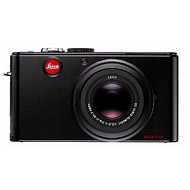 | Leica D-LUX 3 Pros: Size, stabilized sensor, used price, optical quality Cons: Minimal on board controls, outdated technology Opinion: I had a D-Lux 3 sold it to take the 6, now I bought it back ..... it is really small with an optical zoom all do, it is a valid alternative to photos with the phone and the quality is enormously superior ..... it has everything you expect from a real compact in terms of size and operational ability .... Ideal machine for family photos, friends meetings, birthdays etc at a palious price, I just bought it back at 100 euros. Also great to keep in the bag with the real kit for some quick photos and without getting noticed .... The sensor although small allows prints of generous size and good quality, on the optical quality is not discussed, it is a Leica and you see .... speed is not its strong, but I repeat for 100 euros you carry a car great for memories and for some stolen photos passing unnoticed sent on July 04, 2020 |
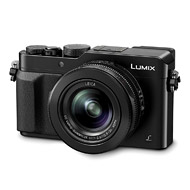 | Panasonic Lumix LX100 Pros: Optical quality, a large in small size, value-for-money sensor, non-compact sensor, wide control possibilities Cons: Ergonomics, too small and the controls too close together are not always very easy to reach especially with the camera to the eye. I've always had a particular dislike for the exposure control selector too protruding and you will easily be without realizing, Electric Zoom and sensitivity to dust, a little slow in the shot. Size not compact, does not fit in your pocket Opinion: I had the LX100 wanting to use it as a compact of other systems bought used about a year ago .... in this segment I came from Fuji X10, Leica D-Lux 3 and D-Lux 6 ..... immediately I liked the simplicity of use, everything is where it should be, the times in place and the diaphragm on the lens, just put the two A's and you have the convenient and effective program .... but then the imagination collided with reality .... compact has little because it starts to be of no minimum size as you expect from a compact (in the end it is little smaller than my M6) has too many controls, dials and keys in little space so to adjust you have to take the machine out of the eye continuously so eventually you end up checking the display .... in particular the selector to correct the exposure, perhaps too protruding, I found it often and inadvertently moved from zero .... in short a small one that wants to make the big, but big is not .... great on the road to use as a unique car leaving at home heavier runs, but as compact is not the best for my personal opinion. After about a year of sporadic use the electronics left me .... I believe the engine of the burnt zoom, I will show it on the return to Italy, meanwhile I went back and replace it with a D-Lux 6 that I already had, the quality of the files is comparable, the dimensions are smaller and although it does not have the built-in viewfinder (but possibility to put it external), it has however the integrated flash that I think is more comfortable in a compact ..... in short my judgment is overall positive, you have to understand what you are looking for from a machine in this market sector .... I want to replace the cell phone ..... the electronic viewfinder is good, but certainly not at the top of modern technology for this I often preferred the display to keep the scene under control ..... In any case, the optical quality and blurry of the LX100 is excellent thanks to its Vario Summilux 24-75 f/1.7 you see the Leica imprint sent on July 04, 2020 |
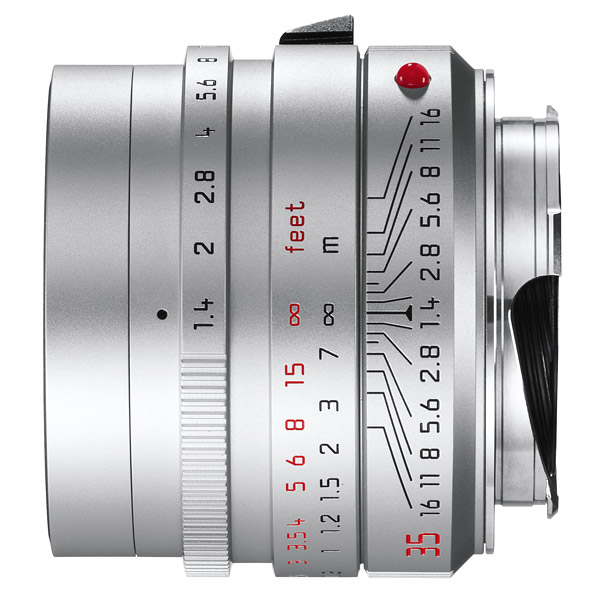 | Leica Summilux-M 35mm f/1.4 ASPH Pros: Optical quality Cons: Lens hood Opinion: I have the pre FLE version that I use on film and MP 240, I find it with an amazing optical quality, a rendering of colors and a strong blurring, but always readable with a remarkable scan of the planes. At TA it has a little vignette, but very pleasant and that contributes to the creation of the image, in my opinion of course. In fact, in my opinion it helps to focus the attention on the center where (typically) is the main subject isolating everything else. The best of it is given in low light conditions (for example in churches, mechanical workshops, in situations of atmosphere such as candle lights, etc.). Flare, coma, etc virtually absent already at TA making it perfectly usable sent on December 24, 2019 |
 | Rollei 35 (40mm Sonnar f/2.8) Pros: Size, sturdy construction, feeling beyond of course to absolute mechanical reliability and superb optical quality, current value of the used Cons: Focus only on estimation, not precise and delicate exposure meter, impossibility to repair the exposure meter Opinion: I had it, then I sold it and bought it again! I also had the one with the Tessar f/3.5, but the quality of the Sonnar is (in my opinion) decidedly superior. It is true that I still shoot only in analogue, but the little Rollei always finds a small space to be able to carry with me and performs perfectly to the purpose, excellent yield both in color and black and white and not disfigure near my Leica sent on September 03, 2018 |
 | Leica IIIf Pros: Very reliable mechanics, robust and high precision brass car body, very accurate rangefinder, remarkable both original and commercial optical parks thanks to the universal screw engagement M39, popular costs, stainless charm, hence the Leica myth Cons: Lack of meter, viewfinder without parallax corrections and uncomfortable (the situation greatly improves with the various outside viewers), unsuitable film loading, although taking our hand is nothing prohibitive, there are many online tutorials. Opinion: I have a IIIf red numbers of 1954 with its Elmar 50 f / 3.5 original always red numbers. Initially I did not know how to appreciate it, but now I love it and consider it the main car of my kit replacing the M6. Mechanical is overwhelming, the shutter sound, on balls, is just an imperceptible whisper. The range finder with its magnification of 1.5 x (it is about 100 mm is absolutely accurate.The main defects are lack of meter, rangefinder in a separate box and no parallax correction, however these defects with a load Insufficient film (you have to hand us your hand) makes it an ideal machine for a Zen photo, a small pocket display (or even one of the many Apps on the phone) combined with a bit of reading light and it's hard to miss a photo and is always ready to shoot.It is always with me and wherever I go in the world I am sure to bring back good pictures at home.The lens park is exterminated both original Leica, VGT, Russians and so much else having'universal M39 mount. Both the car body and the lenses (apart from a few special focuses) are at more popular prices, a little more are valued the various external mirrors and some special accessory. It is still a beautiful world to discover with a lot of calm and philosophy. To date, with a maximum of about 500 €, a good machine is brought home and its goal, at best a good internal, lubricated, and calibrated cleaning can assure a faithful companion who for many shades will no longer ask for anything, I can assure you that resuming in hand after about 30 years of stopping and crawling very well, I enjoyed it all summer. Just be careful that not everyone is able to put your hands on it, so be sure to know about the repairer's experience. sent on October 16, 2017 |
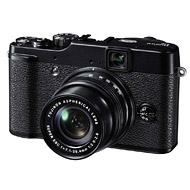 | Fujifilm X10 Pros: Quality, feel, style pleasantly Retro Humor, zoom with manual rotation, EXR mode very practical, ease of use and speed of use. Excellent in news reports and in all those situations where you want to be light and fast Cons: Optical viewfinder without information and with a lower coverage than the area framed therefore unusable, time and diaphragm very cumbersome to be inserted through the menu then in fact you can only use with automatic even if projected to use manual and semi automatic. Opinion: The X10 with a hybrid viewfinder and a possibility easier adjustment of time and diaphragm would be the perfect machine for each situation, in each case between the compact setting it seems reductive. Its 12 megapixels are more than sufficient to return sharp images and pleasant even at high magnifications, operating speed more than sufficient for the type of machine. Objective quality and bright enough with the zoom adjustment manual make it pleasant and comfortable. I often like to go unnoticed with the silent mode and setting the lens for the 35mm and shooting without framing. In any case it seems a machine very robust and long lasting. Since she is almost always in the repair kits others remain at home! Aesthetics higher than the X30, and the X20 I have never heard rave reviews, not at all quotations of used are high. Money well spent, I could not part with it sent on December 26, 2015 |
 JuzaPhoto contains affiliate links from Amazon and Ebay and JuzaPhoto earn a commission in case of purchase through affiliate links.
JuzaPhoto contains affiliate links from Amazon and Ebay and JuzaPhoto earn a commission in case of purchase through affiliate links.May Beauty Be Everywhere Around Me